How To Use Tea Tree Oil For Mole Removal
Let the magical properties of this essential oil naturally address your skin issues.
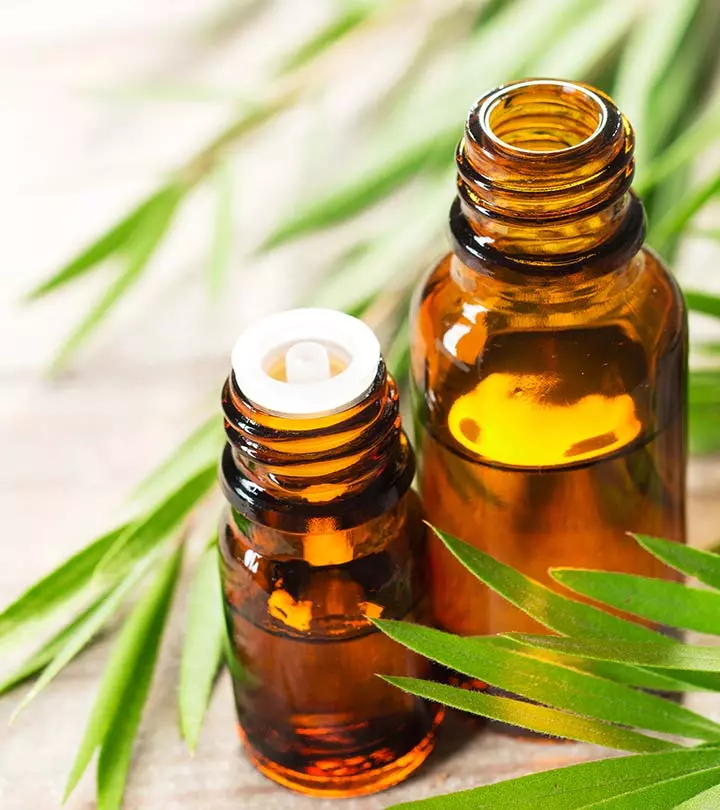
Image: Shutterstock
Moles can be a cosmetic concern for many of us. Not everyone is confident to flaunt them, especially if they are on your face. While there are numerous ways to remove moles in dermatology and alternative medicine, many people prefer using tea tree oil for mole removal. Surgical mole removal is often costly, prompting people to turn to this natural remedy. If you are curious how tea tree oil may help remove your mole, this article explains everything. However, make sure the moles are benign as there can be significant risks of removing certain types of moles at home. Get them checked by a doctor before trying any home remedies to ensure safety. Scroll down to read more.

In This Article
What Are The Benefits Of Using Tea Tree Oil?
Tea tree oil is extremely versatile. You can use it for treating a wide range of skin, nail, beauty, and hair-related wellness concerns. Whether it is acne or blemish removal, treating nail fungus, or accelerating wound healing – this single ingredient can solve multiple issues. Tea tree oil can also be used for skin tags. And that’s due to the following reasons:
1. It Helps Reduce Inflammation
Tea tree oil not only inhibits infection in wounds but also promotes healing by reducing inflammation.
It is antimicrobial and can prevent a wide range of skin issues, including contact dermatitisi An itchy rash or inflammation of the skin caused due to contact with a substance, such as an allergen. (1), (2).
2. It Is A Very Good Disinfectant
Be it broken skin or a minor scrape, bacteria and virus need a small entrance to get into your bloodstream and cause infection. Tea tree oil can help disinfect cuts, wounds, broken skin, and abrasions, thus preventing infection (3).
3. It Prevents Acne Breakouts
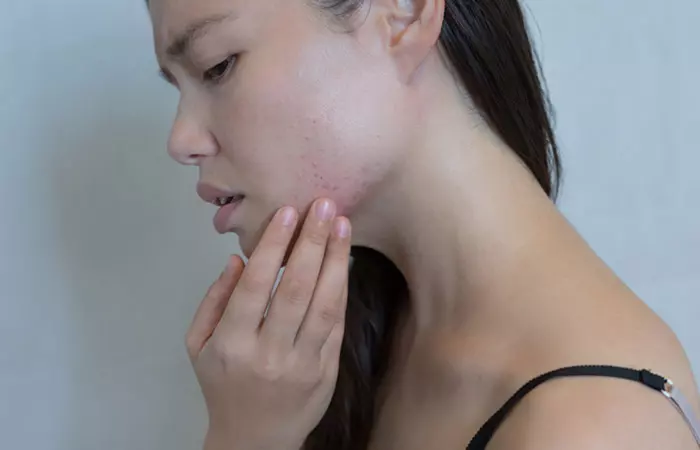
Studies have proved that tea tree oil can reduce the severity of acne, and this makes it one of the most potent weapons in your skin care arsenal. A study showed that 5% tea tree oil was more effective in reducing acne as compared to a placeboi A treatment or procedure that deceives the body into thinking it is real but has no therapeutic value. (4).
4. It Is Effective In Treating Nail Fungus
Fungal infections are very common, and tea tree oil is pretty effective in controlling such infections.
Whether you use it alone or combine it with any other ingredient, it works quite well in treating fungal infections (5), (6).
 Trivia
TriviaNow, the question is, can tea tree oil remove moles? Let’s find out!
Key Takeaways
- Tea tree oil possesses antibacterial properties that may help get rid of moles.
- Its antimicrobial properties may help treat acne and nail fungus.
- Use a q-tip to apply a little bit of tea tree oil on the mole and let it dry.
- You may mix tea tree oil with jojoba oil or water before applying it to the mole.
Does Tea Tree Oil Remove Moles?
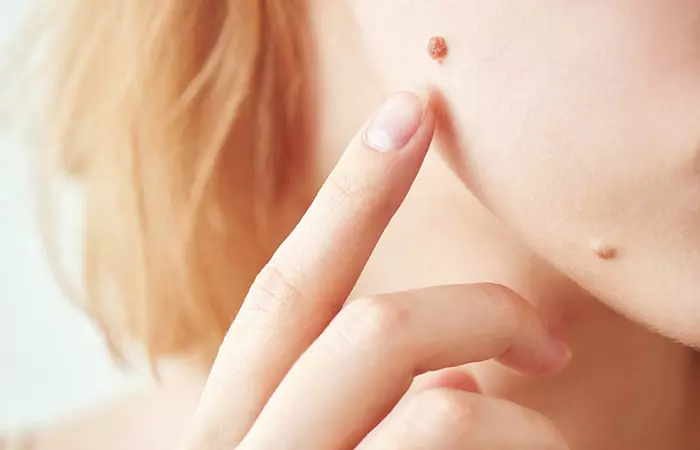
Well, there haven’t been enough studies on the effectiveness of tea tree oil in removing moles. However, the proponents of tea tree oil claim that this is indeed a no-risk treatment option for mole removal. From anecdotal evidence, it seems that the oil is beneficial in removing moles that are not malignanti A term used to describe the presence of cancerous cells that have the ability to spread to other parts of the body. or deeply embedded in the skin. Moreover, tea tree oil has been used for treating warts, skin tags, and moles for ages. When you apply it, it dries out the mole, making it fall off on its own.
Moles that do not have deep roots and are more shallow respond pretty well to tea tree oil. The time it takes to cure the issue depends on the size of the mole.
 Quick Tip
Quick TipNow, what are the ways to use tea tree oil for mole removal? Let’s take a look.
How To Use Tea Tree Oil For Mole Removal
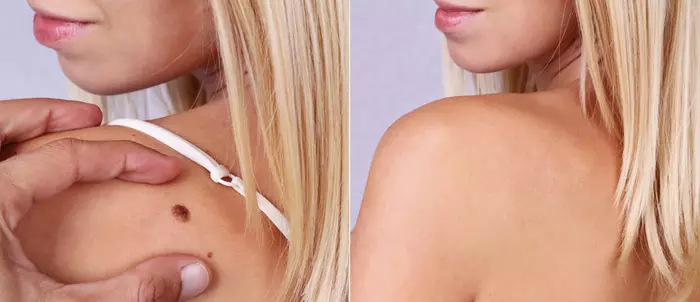
There are specific ways of using tea tree oil to get rid of moles, and they are pretty easy. Here’s a step-by-step guide:
Method 1
- Take a small cotton swab and
- pour tea tree oil on it (undiluted).
- Place the cotton swab on the mole and fix it with an adhesive tape.
- Leave it on for several hours. Remove it and wash the area with water.
- Repeat this process twice or thrice a day until the mole disappears.
Method 2
- Take a Q-tip and dip it in tea tree oil.
- Apply the oil to the mole and let it dry.
- Do this at least 2-3 times in a day and continue until the mole disappears.
Before applying tea tree oil, clean your face using a mild cleanser and pat it dry. The outcome of the treatment may vary from person to person.
How Long Does It Take To Remove Moles Using Tea Tree Oil?

Well, it depends on the size of your mole and how deeply it is embedded into your skin. Tea tree oil may give pretty quick results when used on moles that are small and have shallow roots. The moles that have pretty deep roots and are malignanti A term used to describe the presence of cancerous cells that have the ability to spread to other parts of the body. will not respond to the treatment. You have to wait for at least a couple of weeks before you notice any results.
Also, the duration of the treatment depends on the size of the mole. If it is small, it may take two weeks, while for larger ones, you may have to wait for at least a month before you see any results.
You also have to be very consistent with the treatment to reap its benefits. Follow the treatment method persistently until you see results.
Eventually, you will see that either the mole has shrunk or it has fallen off, exposing clear skin underneath. This skin will be sensitive to touch for a few days before it heals completely. The good thing about this treatment method is that it:
- Is completely natural.
- Is extremely safe, so you don’t have any risk of infection.
- Will not leave any scar marks behind.
- Can be used on any part of your body.
- Is hassle-free and easy to follow.
- Is inexpensive.
When you are working with essential oils, you have to keep certain things in mind.
A Few Precautions To Take While Using Tea Tree Oil For Mole Removal
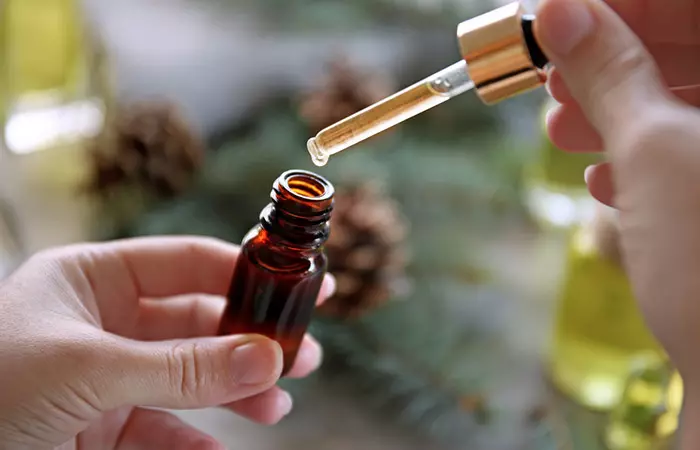
- Essential oils are pure oil extracts and pretty strong. Apart from the moles, you shouldn’t apply undiluted tea tree oil on other areas as this might cause skin irritation.
Ramio, an Australian vlogger, shares how he naturally removed his mole in 9 days using tea tree oil, along with some mistakes he made during the process. He says, “I’ve applied tea tree oil directly onto my skin. That’s a bad idea (i).” He explains that you should apply the oil directly to the mole and avoid the skin around it to prevent irritation and burning.
- Before you use tea tree oil, do a patch test to check if it suits your skin. Apply a bit of the oil on the area behind your ears and wait for some time.
- Also, do an allergy test. People can be allergic to tea tree oil, and they might not even know until they do an allergy test or develop an allergic reaction.
- The treatment results depend on your skin type. Not all people respond to a particular treatment in the same way. The outcome of the treatment may also depend on your skin type.
- Never ingest tea tree oil. Essential oils are only for topical application. Do not try to pluck or scratch the mole. Let it fall off naturally.
- If the oil is irritating your skin, dilute the oil with a tiny amount of olive or jojoba oil or water and then apply. If the irritation continues, stop right away. Once the mole falls off, protect the new and exposed skin from the sun to prevent sun damage. Apply sunscreen whenever you go out, and keep the area covered for at least six weeks.
Another popular remedy for removing moles has been apple cider vinegar. But is it more effective than tea tree oil or does it provide similar results? Learn more in the next section.
Tea Tree Oil Vs. Apple Cider Vinegar For Moles

While tea tree oil may offer good results when used religiously, apple cider vinegar is another home remedy that may help remove moles. It contains acetic acid that helps ‘chemically burn’ the skin and may help remove the stubborn mole. As per anecdotal evidence, while apple cider vinegar may offer visible results, it also could cause adverse effects like scarring and pigmentation. Tea tree oil is, hence, considered a safer bet and can be relied on for its antibacterial, antiseptic, and antifungal properties.
If these two natural remedies for mole removal do not work, it is best to go for professional treatments like surgical excision. Learn more about them in the next section.
Other Treatments For Mole Removal
Before removing a mole for cosmetic reasons, your doctor will ensure it is not cancerous or showing signs of abnormal growth. Once clear, they may suggest the following professional treatments for mole removal:
Surgical Excision
Surgery is the oldest and most widely used method for mole removal. It may use different techniques, such as:
- Shave Excision: It uses a razor-like tool to remove the upper part of the mole.
- Round Excision: It uses a circular blade to remove the mole.
- Deep Excision: It removes deeper layers of the skin along with the mole.
- Razor-Blade Excision: It uses a slightly curved razor blade to shave off the mole down to the upper part of the second skin layer.
Different types of moles require different surgical depths. For instance, for a surface-level mole, a shave excision may be enough. However, for deeper moles, deep excision may be needed. When compared to tea tree oil for mole removal, this method is much more effective. However, it may be expensive and there are chances of recurrence of moles and scarring (8).
Laser Removal
Lasers are sometimes used to remove moles. Different types of lasers are used depending on the depth and size of the mole.
However, this treatment is controversial, as it does not allow for lab testing of the removed tissue. This means doctors can not confirm whether the mole is cancerous. Some also believe lasers might increase the risk of mole cells turning cancerous, while others argue lasers could reduce this risk by destroying abnormal cells (8). That said, the treatment is definitely more effective than tea tree oil. However, it may be expensive.
Cryotherapy
This procedure uses extreme cold, typically liquid nitrogen, to freeze and destroy unwanted skin cells. It is commonly used for warts, moles, skin tags, and some superficial skin lesions. The treatment has a longer healing time. It is also more effective as compared to tea tree oil but is expensive and has risks like hypopigmentation and scarring (9).
Infographic: The Most Effective Way To Use Tea Tree Oil To Remove Moles
Tea tree oil is an effective way to get rid of moles. Here, we stress upon the most effective method and offer additional information that will help you carry out the whole procedure in a better way. Check out the infographic below to learn more.
Some thing wrong with infographic shortcode. please verify shortcode syntax
Moles may lower your confidence and make you conscious of your appearance. Though harmless, many prefer removing them due to cosmetic concerns. Despite having surgical options, most people go for home remedies like tea tree oil for mole removal. Tea tree oil is considered one of the best solutions to many skin-related issues, mainly because of its anti-inflammatory, antifungal, antiseptic, and antibacterial properties. Though there is insufficient research to support the claim, anecdotal evidence suggests tea tree oil dries out the mole, which falls off naturally. However, it might not provide instant results, and you need to be patient with the removal procedure.
Frequently Asked Questions
Is tea tree oil capable of fully removing moles?
Tea tree oil may not be capable of completely removing the moles. Further, the results can also vary depending on the type of mole.
What are the potential risks of using tea tree oil for mole removal?
Using tea tree oil for mole removal can cause skin irritation and allergic reactions. It may also result in incomplete removal. It may further delay the proper diagnosis of potentially harmful moles, so professional guidance is advised.
How can I determine if my mole is benign?
To check if a mole is benign, look for uniform color, regular shape, and small size. Any discrepancy you notice in the symptoms should be shared with a dermatologist for proper guidance.
What do dermatologists use to remove moles?
Dermatologists use different procedures to remove the moles. They may burn the moles with an electric current, cut or shave them with a surgical blade or freeze them with liquid nitrogen to remove the moles. If you don’t want an invasive procedure, you can opt for home remedies for mole removal.
What essential oil eliminates moles?
Apart from tea tree oil, people also use frankincense oil or oregano essential oil to remove moles.
What are the alternatives to tea tree oil for mole removal?
Baking soda mixed with castor oil can be used to remove moles. Applying garlic, iodine, banana peels, and hydrogen peroxide are different alternatives to tea tree oil for mole removal.
What is the fastest way to get rid of a mole at home?
Tea tree oil is one of the fastest ways to eliminate a mole at home. However, the time it takes to remove the mole also depends on its size.
Illustration: How To Use Tea Tree Oil For Mole Removal - Methods And Precautions
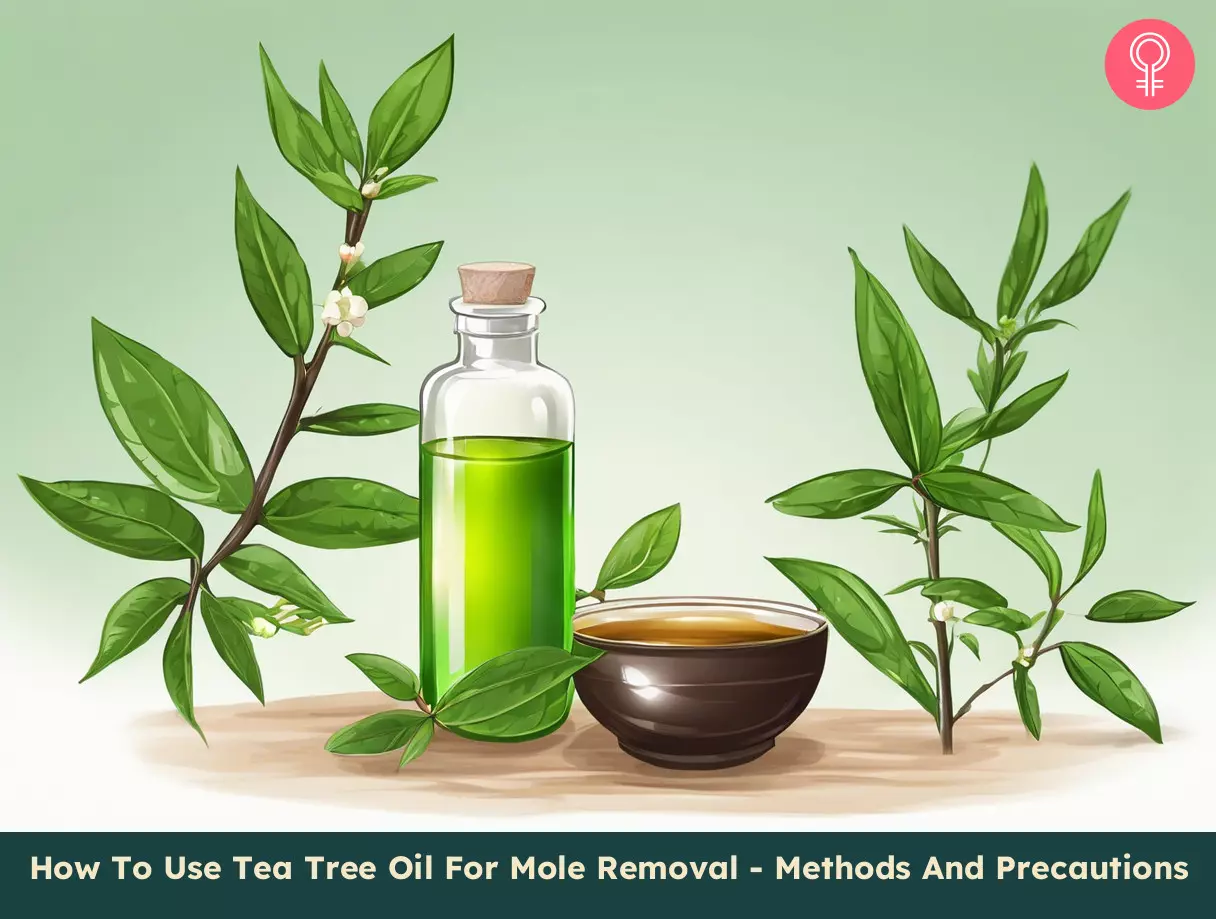
Image: Stable Diffusion/StyleCraze Design Team
Discover the natural secret to getting rid of moles effectively and safely! Click on the video given below and learn how to use tea tree oil for mole removal.
Personal Experience: Source
StyleCraze's articles are interwoven with authentic personal narratives that provide depth and resonance to our content. Below are the sources of the personal accounts referenced in this article.
i. How to Naturally remove moles (This works!)https://www.youtube.com/watch?v=G_wmP3TrfFQ
References
Articles on StyleCraze are backed by verified information from peer-reviewed and academic research papers, reputed organizations, research institutions, and medical associations to ensure accuracy and relevance. Read our editorial policy to learn more.
- Staphylococcus aureus and wounds: a review of tea tree oil as a promising antimicrobial
https://pubmed.ncbi.nlm.nih.gov/15525915/ - Hydrogels Containing Nanocapsules and Nanoemulsions of Tea Tree Oil Provide Antiedematogenic Effect and Improved Skin Wound Healing
https://pubmed.ncbi.nlm.nih.gov/26328444/ - Melaleuca alternifolia (Tea Tree) oil: a review of antimicrobial and other medicinal properties
https://pubmed.ncbi.nlm.nih.gov/16418522/ - The efficacy of 5% topical tea tree oil gel in mild to moderate acne vulgaris: a randomized double-blind placebo-controlled study
https://pubmed.ncbi.nlm.nih.gov/17314442/ - Treatment of toenail onychomycosis with 2% butenafine and 5% Melaleuca alternifolia (tea tree) oil in cream
https://pubmed.ncbi.nlm.nih.gov/10357864/ - Comparison of two topical preparations for the treatment of onychomycosis: Melaleuca alternifolia (tea tree) oil and clotrimazole
https://pubmed.ncbi.nlm.nih.gov/8195735/ - Patient understanding of moles and skin cancer and factors influencing presentation in primary care: a qualitative study
https://pmc.ncbi.nlm.nih.gov/articles/PMC2939514/ - Optimal management of common acquired melanocytic nevi (moles): current perspectives
https://pmc.ncbi.nlm.nih.gov/articles/PMC3965271/ - Cryotherapy in Dermatology
https://www.ncbi.nlm.nih.gov/books/NBK482319/
Read full bio of Vd. Naveen Sharma
Read full bio of Ramona Sinha
Read full bio of Eshna Das
Read full bio of Shiboli Chakraborti






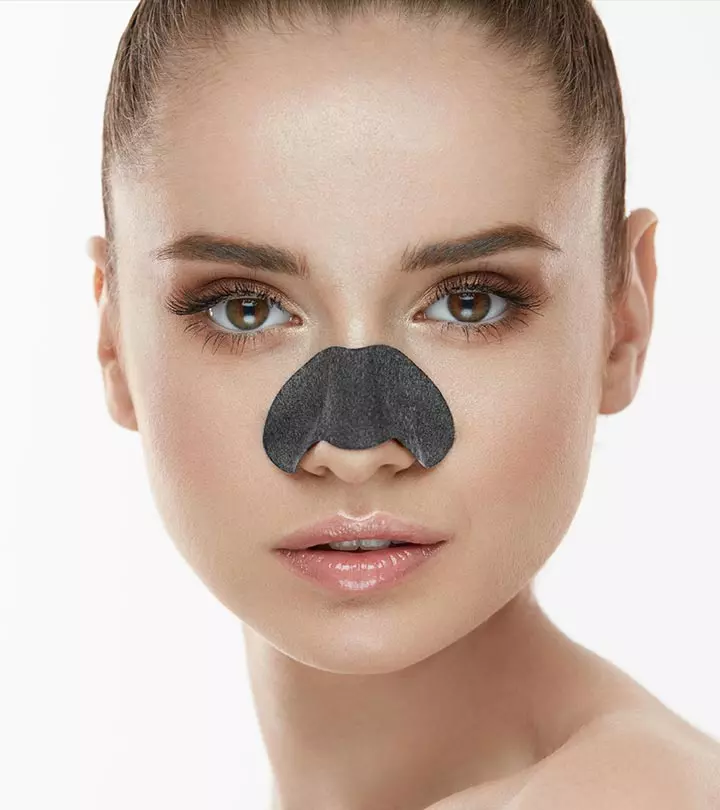
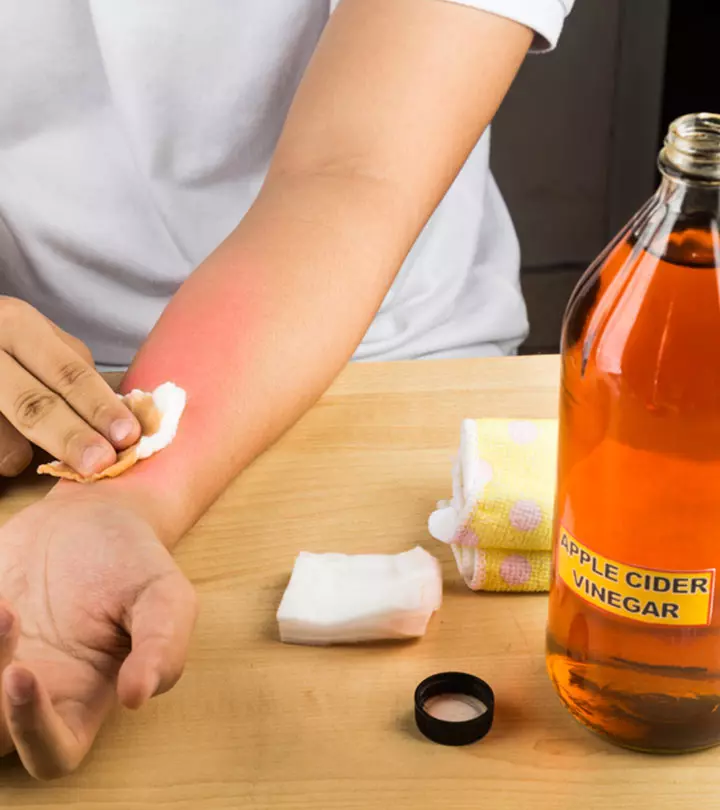
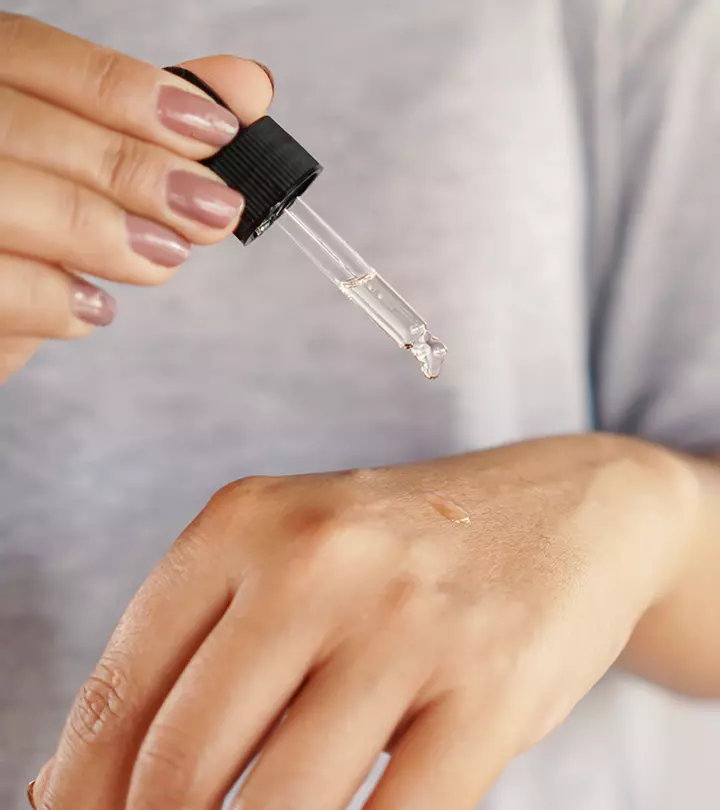
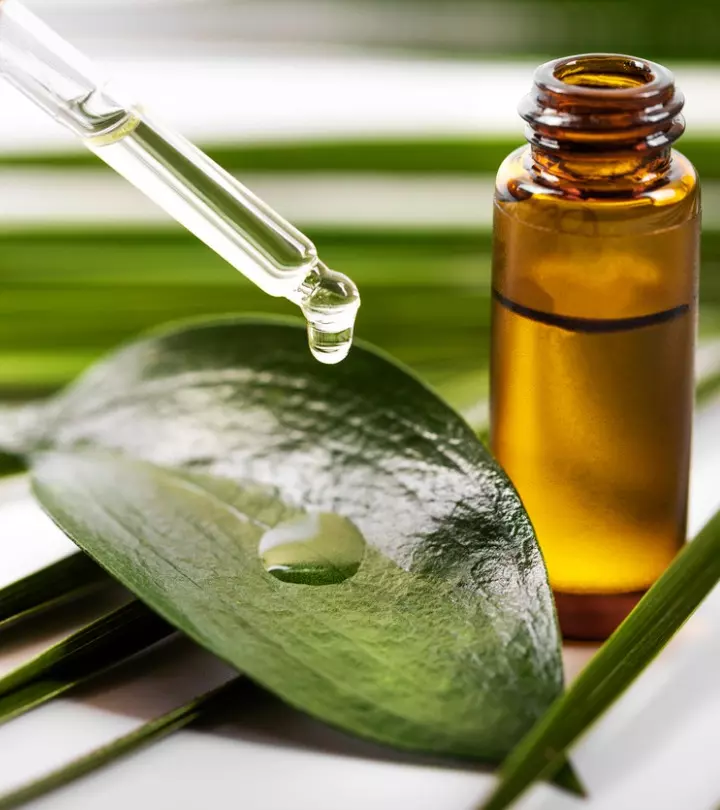
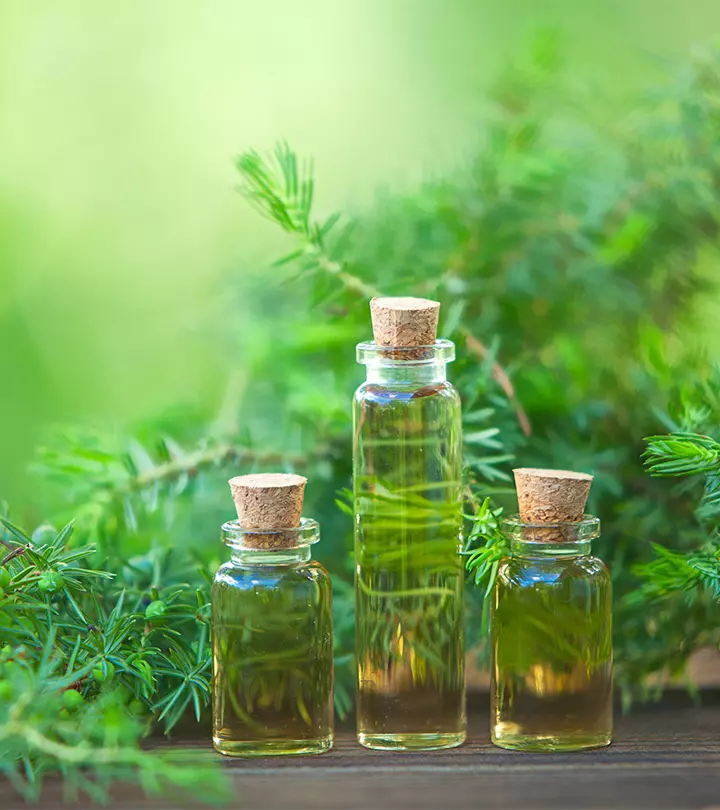


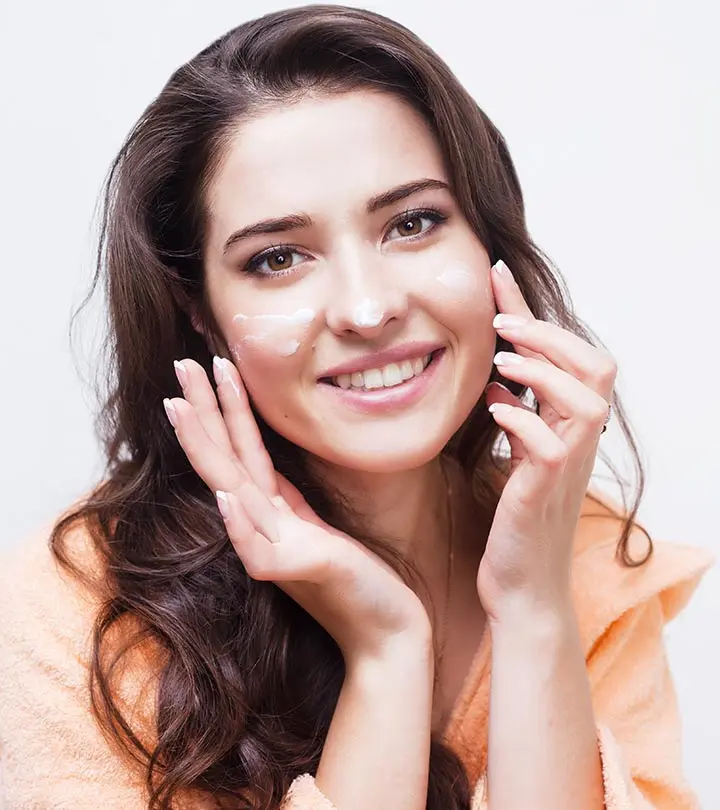

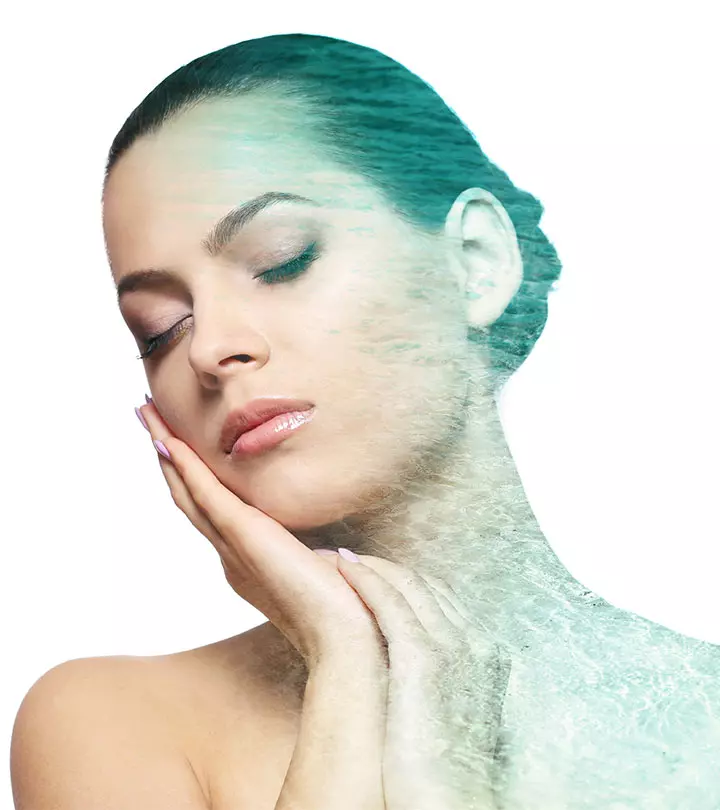
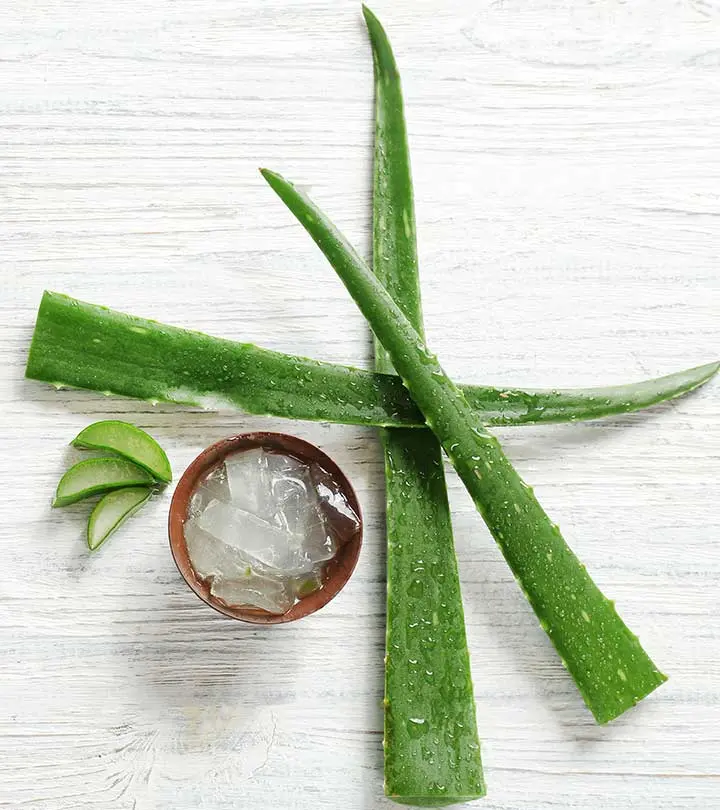


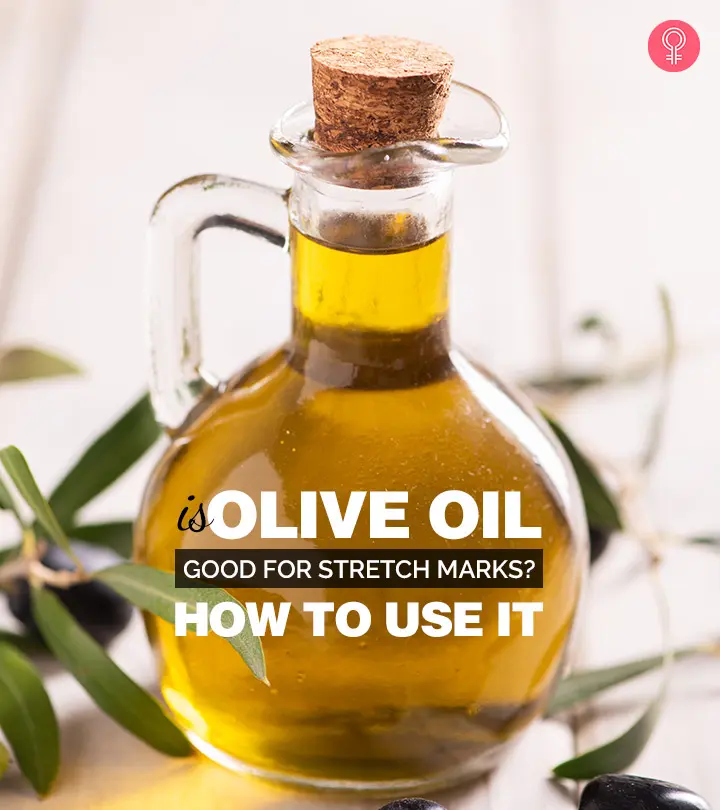
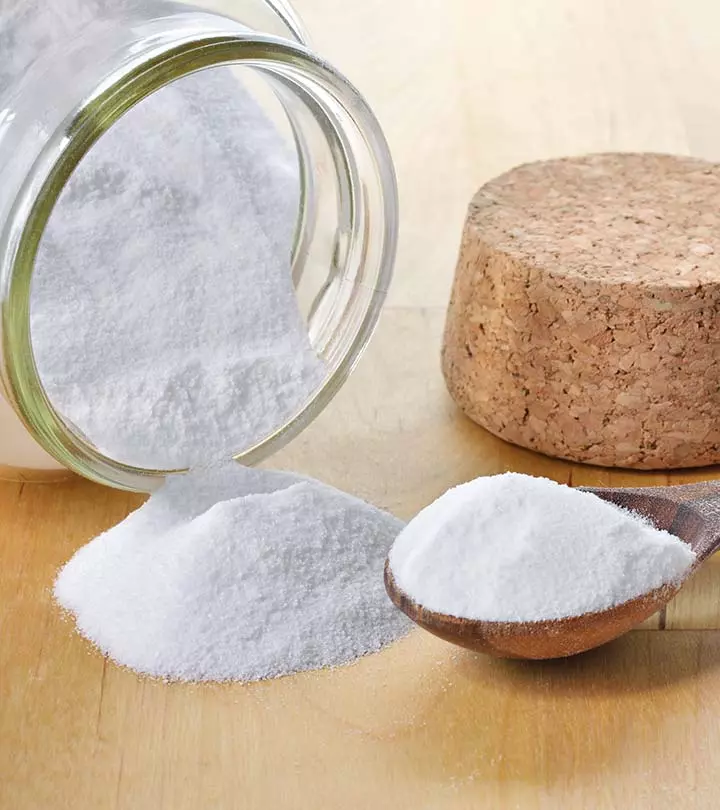

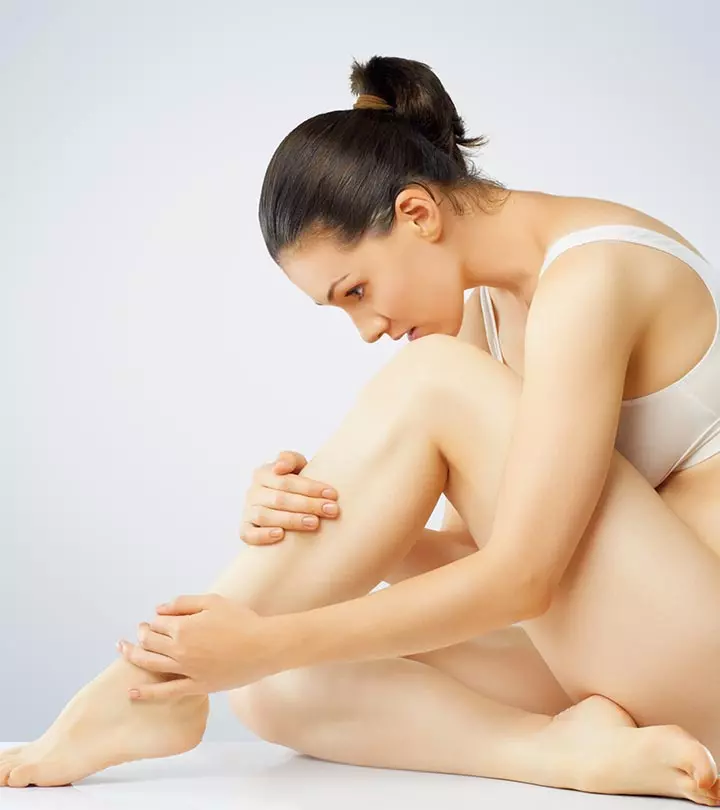
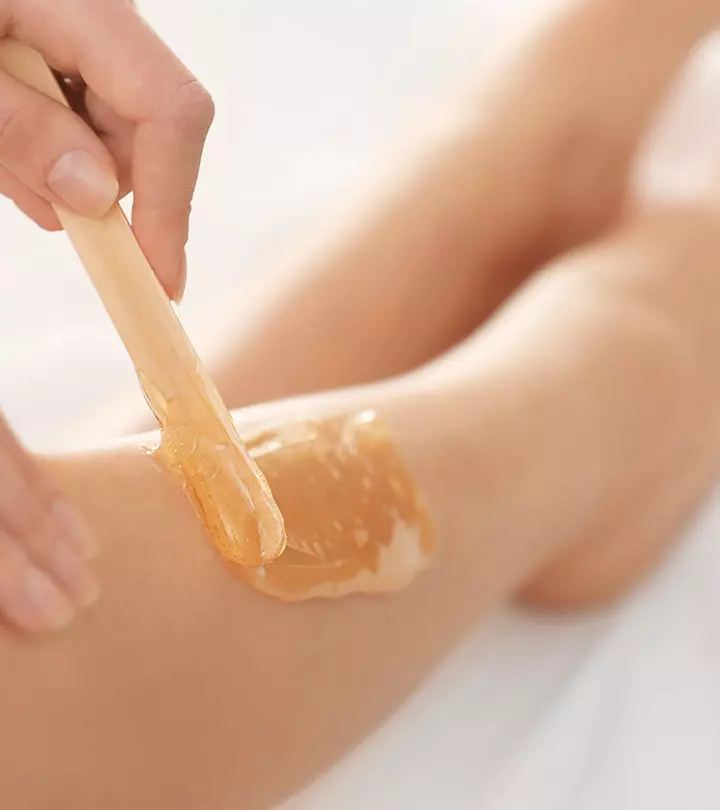
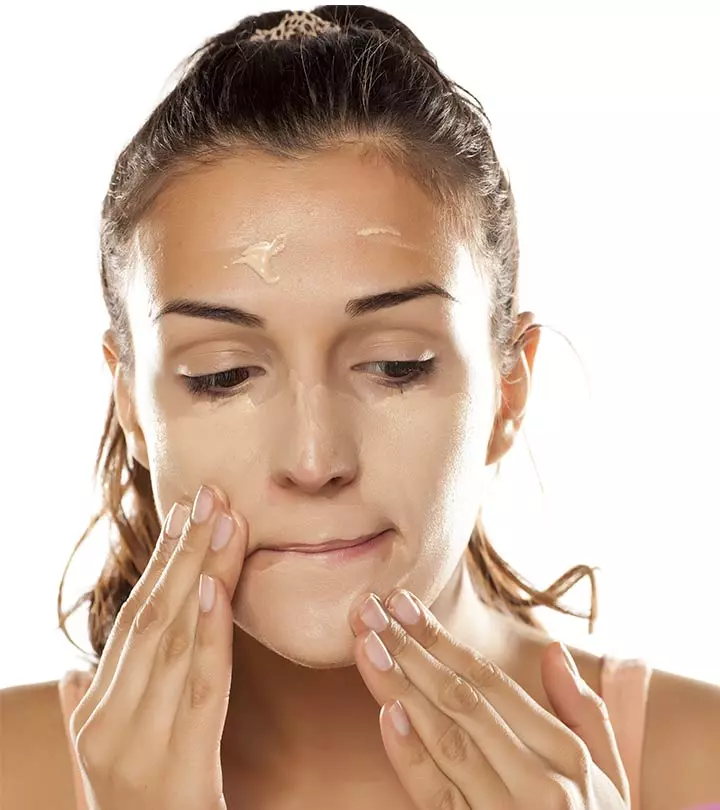
Community Experiences
Join the conversation and become a part of our empowering community! Share your stories, experiences, and insights to connect with other beauty, lifestyle, and health enthusiasts.